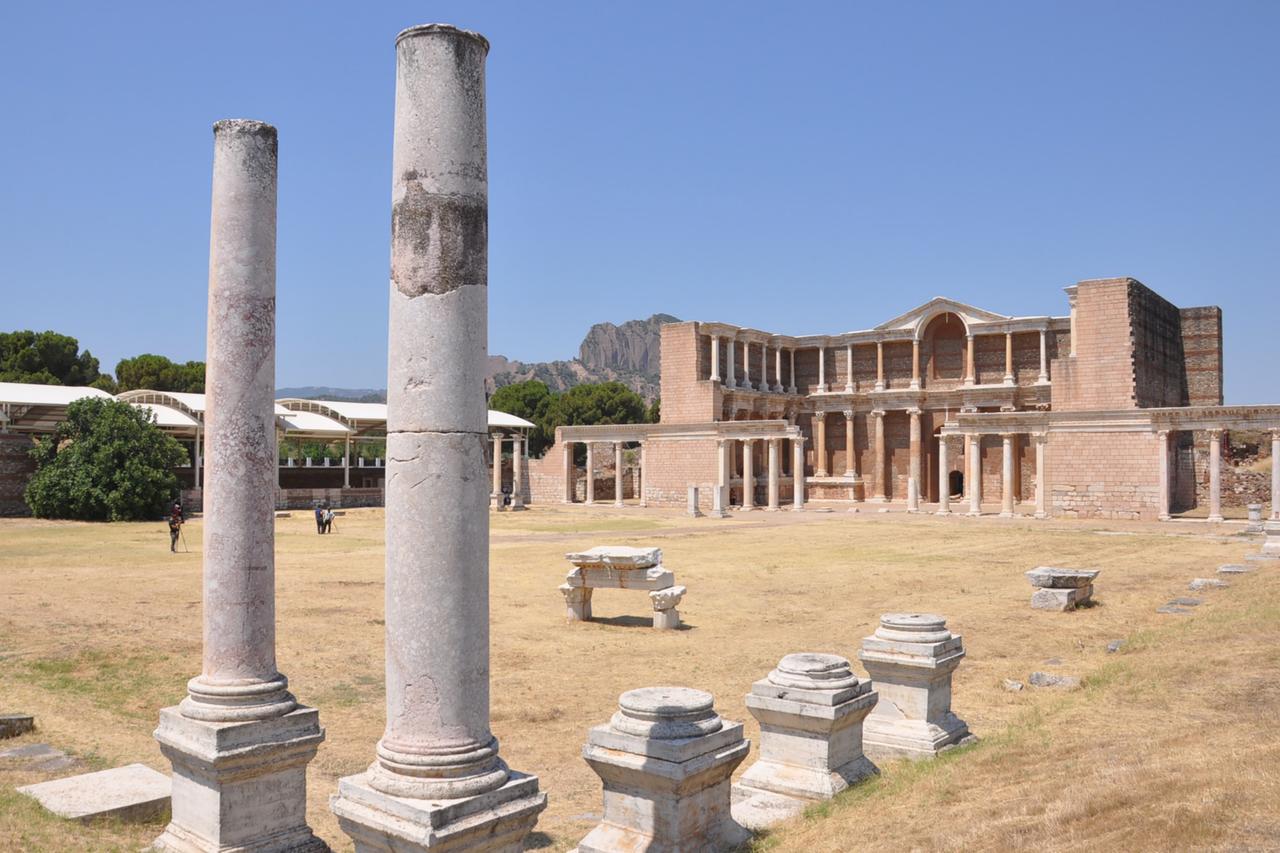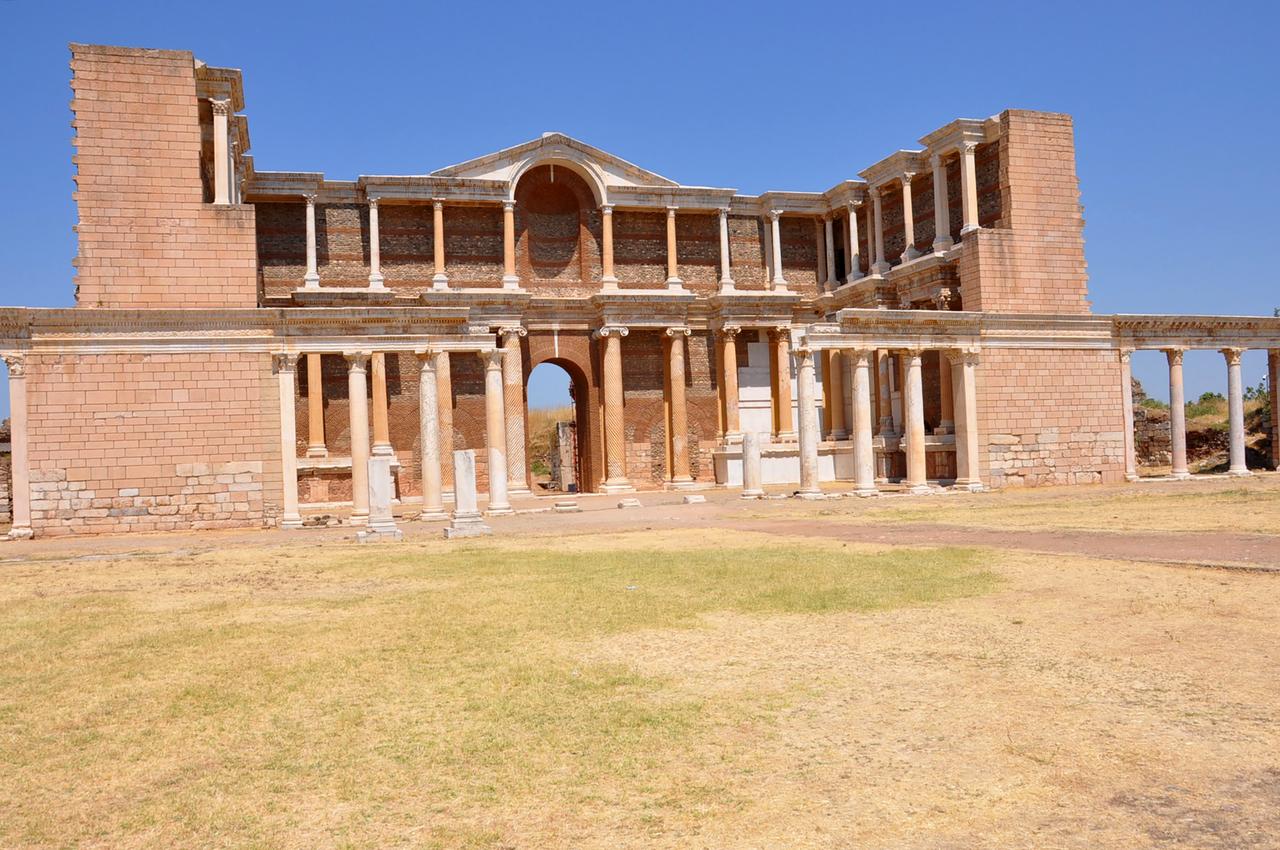
The ancient city of Sardis and the Bin Tepe Lydian Tumuli in Türkiye's Manisa have just been inscribed on the UNESCO World Heritage List in a historic meeting.
This announcement was made at the 47th session of the World Heritage Committee, which took place in Paris on July 6, and was a milestone in the path of preserving cultural heritage in Türkiye.
Mehmet Nuri Ersoy, Türkiye’s Minister of Culture and Tourism, shared the exciting news on social media, calling the addition of Sardis as Türkiye’s 22nd UNESCO-listed cultural site a significant achievement.
Ersoy emphasized the incredible historical and cultural significance of the area, which used to be the prosperous capital of the Lydian Kingdom and the source of the first historically minted coin.
“With its impressive 20-meter-thick defensive walls and expansive necropolis area covering 7,500 hectares, Sardis and the Bin Tepe tumuli now stand as powerful symbols of Lydian heritage,” he said.
Sardis is not new in historical research; however, the nature of the listing on the UNESCO list is the affirmation it so much deserves. Since 2013, the location has been included in the Tentative List of World Heritage maintained by UNESCO.
The nomination was accepted by UNESCO on Criterion 3, hailing locations that provide a unique reflection of vanished civilizations or cultural practices.

Sardis, the capital of the Lydian Kingdom, flourished between the eighth and sixth centuries BC and was one of the first Iron Age states in western Anatolia. According to Ambassador Gulnur Aybet, Türkiye’s Permanent Delegate to UNESCO, Sardis is one of the most complex and valuable archaeological sites in the region, thanks to nearly 3,000 years of continuous settlement.
“The Lydians were pioneers in the ancient world of trade and economics,” said Aybet. “Sardis is a living testament to their wealth, innovation, and influence over ancient economic systems.”

Another landmark in Lydia that has been included in the UNESCO World Heritage List, together with Sardis, is the Bin Tepe Lydian Tumuli.
The tumuli, or burial mounds, are an exceptional group of 119 monumental mounds over an area of 75 square kilometers, with some of them dating to the seventh century B.C. The burial mounds constructed by the Lydians have remained a source of burial for other civilizations like the Persians.
“These burial mounds are some of the largest in the world,” Ambassador Aybet pointed out. “Their construction offers a window into the political and cultural shifts that have shaped the region over the centuries. The tumuli are symbols of how the landscape reflects the evolving identities of those who lived here.”
The recognition of Sardis and the Bin Tepe tumuli is not just a proud moment for Türkiye but also a significant boost for preservation efforts.
Professor Nicholas Cahill, head of the Sardis excavation team, expressed his satisfaction with the UNESCO decision, saying it would help ensure the site’s protection and increase global awareness.
“Sardis is a place that captivates anyone who visits, whether it’s the ancient ruins, the beautiful landscape, or the local community,” he said. “This UNESCO listing will help highlight the importance of this site to a global audience.”
Cahill added that the international recognition will not only draw more tourists but will also attract more research and preservation funding, vital for continuing the work at Sardis.

The addition of Sardis to the UNESCO World Heritage List comes at a time when Türkiye is enhancing its efforts to protect and promote its rich historical treasures.
Birol Incecikoz, Director-General of Cultural Heritage and Museums, noted that this UNESCO recognition is a moment of pride for both Türkiye and the people of Manisa, the province where Sardis is located.
“This is a momentous achievement for Türkiye,” Incecikoz said. “It is a testament to our ongoing commitment to preserving our cultural heritage for future generations. We have worked hard to protect this extraordinary site, and now its value is being recognized on a global scale.”
In line with these efforts, Türkiye is also expanding its “Heritage for the Future” project, which aims to secure permanent UNESCO status for many of its archaeological and historical treasures.

Türkiye’s recent addition to the UNESCO World Heritage list marks not only a significant step in safeguarding its rich historical legacy but also reflects its increasing engagement in global cultural discourse.
As a current member of the UNESCO World Heritage Committee, Türkiye plays an active role in shaping international strategies for heritage conservation, underscoring its commitment to cultural diplomacy and multilateral cooperation.
Ambassador Aybet emphasized that the UNESCO recognition of Sardis and the Bin Tepe tumuli is a win not just for Türkiye but for the entire world. “This decision is a success built on science, heritage, and diplomacy,” she said.
“And there is much more to come. Sardis and the tumuli are just the beginning of our journey in safeguarding and sharing the rich cultural legacy of Türkiye with the world.”
The listing of Sardis and the Bin Tepe tumuli is a monumental achievement for Türkiye, securing the country’s position as a global leader in cultural heritage preservation.
As experts and locals alike work together to protect and showcase this remarkable site, Sardis will continue to captivate generations to come, offering a glimpse into one of the most fascinating ancient civilizations of the ancient world.